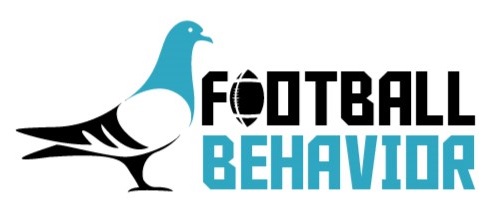NFL Margin For Error Rankings (MFE) is how we at Football Behavior do a version of ‘Power Rankings”.
Trying to standardize and rank the NFL teams arbitrarily may seem like a fun exercise but rarely does it provide any level of value. So what we’ve done is look at team behavior on both sides of the ball and determine which teams are entering their upcoming matchups with most margin for error. So, how do we do it?
NFL Margin For Error: How Do We Do It?
Simply, we take the difference between their scoring behavior rate (SBx: offensive points scored per minute of possession time), and their score prevention behavior rate (SPBx: defensive points allowed per minute of opponent possession time), and weigh it against their time of possession projections for the given week to get a score.
Offense is given more weight in the score due to it being more valuable to winning games. The reason for that is that our data over the last several seasons is very clear: scoring points is more valuable to winning games, and making the playoffs than preventing points. If you can score at an incredibly high rate, you have more margin for error with a sub par defense than if you have a low SBx and an elite defense. Consider this:
- 90% of the top 10 SBx teams made the playoffs (2022-2024)
- In 2022, the top 2 SBx teams went to the Super Bowl, and the top team won
- In 2022, 12 of the top 14 SBx teams made the postseason
- In 2023, the top 2 SBx teams are the number one seeds in their conferences and the favorites to win the Super Bowl
- In 2023, 12 of the top 14 SBx teams made the postseason
- Only 60% of the top 10 SPBx teams made the playoffs (2022-2024)
- Only 50% of the top 5 SPBx teams made the playoffs (2022-2024)
- In 2022, 8 of the top SPBx 14 teams made the playoffs
- In 2023, 7 of the top 14 SPBx teams made the playoffs
How We Construct NFL Margin For Error
The formula for constructing the Margin For Error Scores is pretty straight forward. Scoring Behavior rate (SBx), Score Prevention Behavior rate (SPBx), Time Of Possession Projections. That’s it. Does your scoring outpace your points allowed in time you have to perform those behaviors? If yes, you have more margin for error to withstand outlier events like turnovers, defensive scores, special teams scores, injuries, etc. It is a measure of strength.
- SBx – SPBx = Raw MFE (All SBx and SPBx metrics are outlier adjusted)
- Raw MFE weighted against Time of Possession Rankings = Final Margin For Error Score
There is no cap on the scoring system, as again, that would place an artificial cap on behavioral performance, which doesn’t really exist in the natural world. There is no limit to your margin for error.
Rather than trying to fit it to a 1-100 scale, simply, the higher the score, the better. Said another way, the higher the score, the more margin for error a team has to overcome outliers and other mistakes, and still emerge victorious.
NFL Margin For Error Examples
If team A has an SBx 0.701 points per minute of possession time, with an SPBx of 0.508 points allowed per minute of opponent possession time, that looks like this:
- (0.701 – 0.508) * 100 = Raw MFE of 19.3
- The SBx is then boosted by a fixed %
- That total is then weighted against the projected time of possession for the upcoming game
- That produces a Final MFE Score of 49.3
Since there is no ceiling on the score, meaning there is no absolute top score, the teams are simply ranked by their final MFE score every week.
NFL Margin For Error FAQ
Why is there no ceiling, like a 1-100 scale?
Behavior does not technically have a ceiling, and it is always changing dynamically. If we attempted to fit NFL Margin For Error Rankings to a fixed scale, we would have to artificially adjust measurements to make them fit the scale. Since we are ranking the teams regardless, and the formula is uniform across seasons, it’s much more precise to simply note the highest scoring teams without adjusting the formula to fit an artificial scale.
Is the SBx Boost always the same?
Yes. Given the multiple seasons of data we have, we can pinpoint the appropriate number to boost the SBx in the formula. the difference in value of SBx to SPBx for overall team success has been remarkably consistent across seasons. So that number has not changed, and will not change. Every week, every season, the exact same formula is applied to each and every team.

